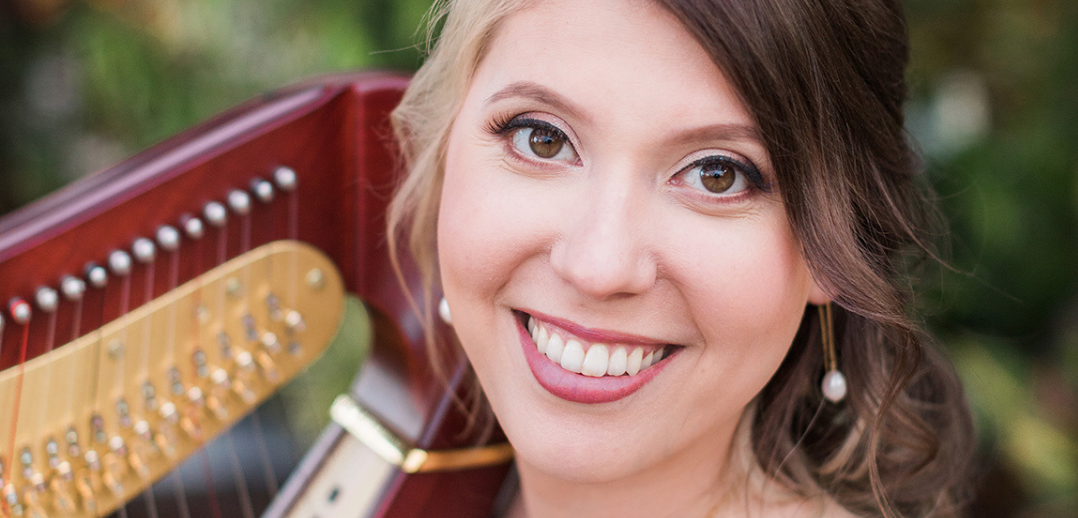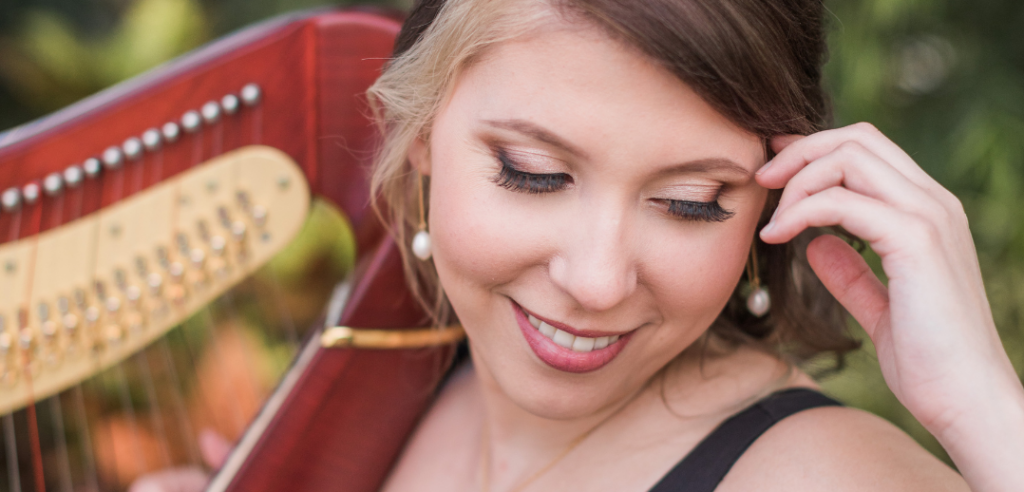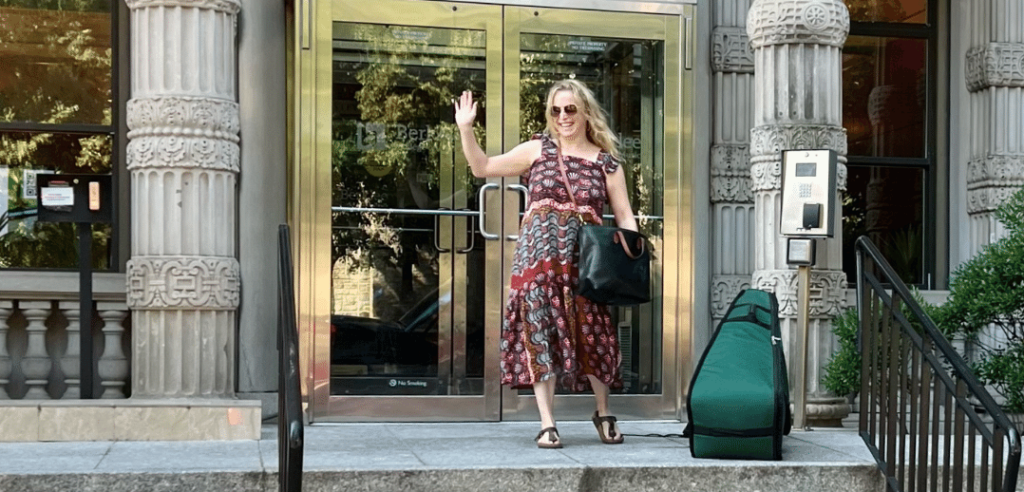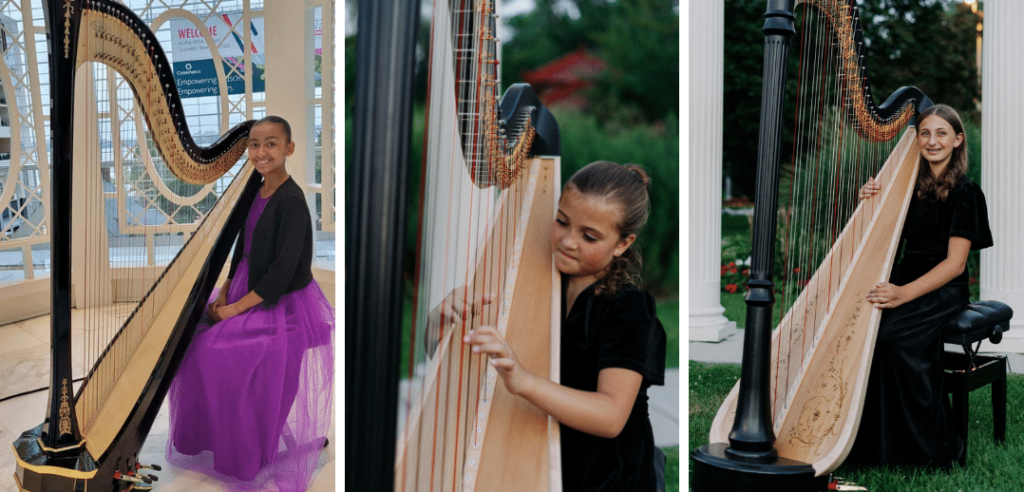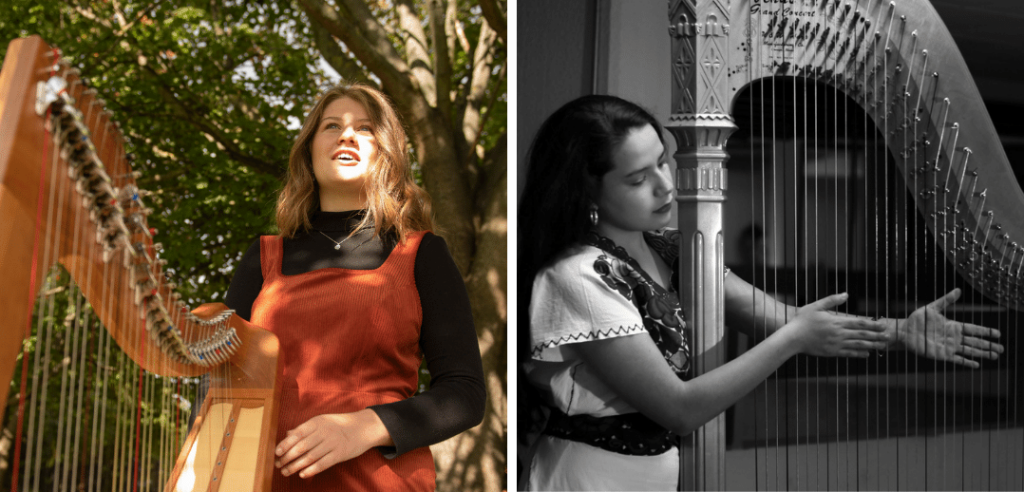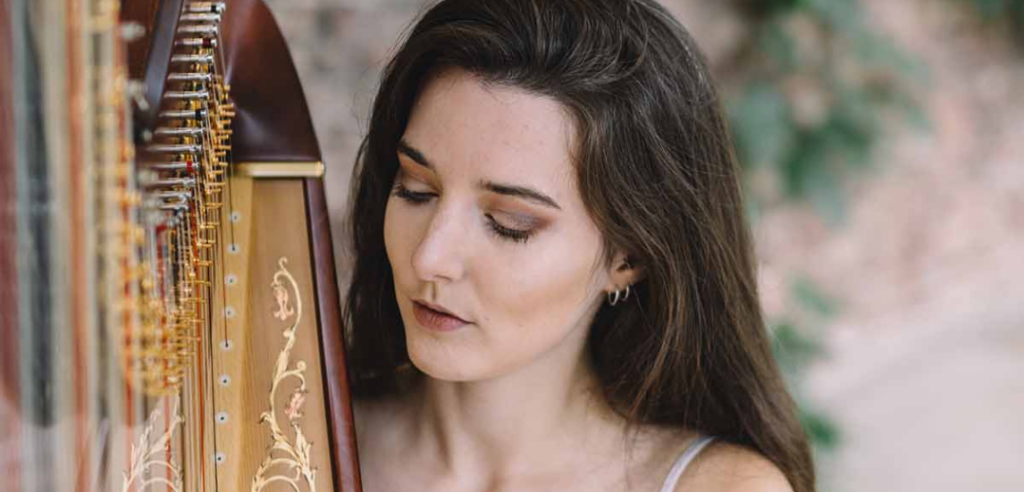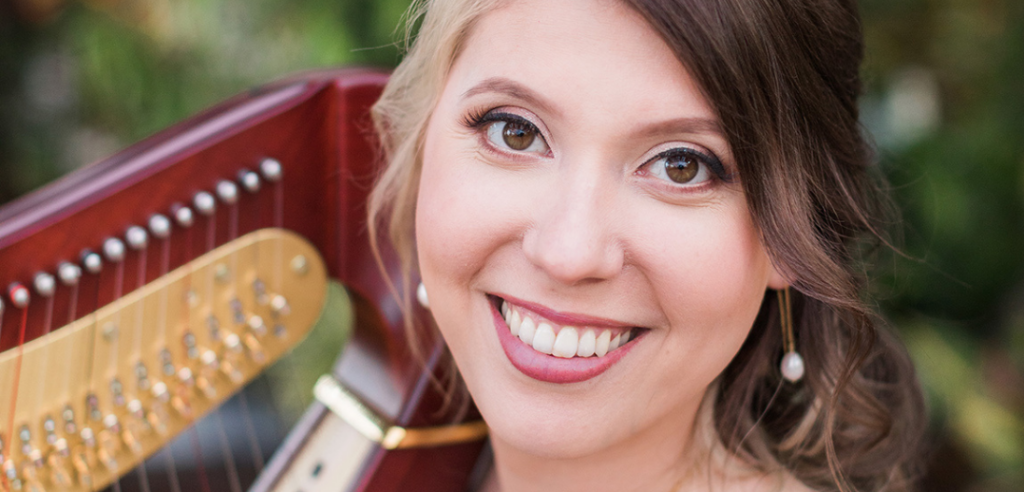Editor’s Note—In our Practice Makes Harpist series, we are following nine harpists over the next several years to see how their practice evolves and shapes their musical experience.
Sarah Glinski
Age: 32
Short-term goal: Perform Suzuki Harp Bk 2, in a recital
Long-term goal: Play in an ensemble and, eventually, in a community orchestra
Goal achieved since starting Practice Makes
Harpist: Performed in best friend’s wedding
In our Practice Makes Harpist series, we’ve chosen harpists from various backgrounds and playing traditions. In this issue, we’d like to introduce you to an adult beginner, Sarah Glinski. She is a federal civilian employee, working for the U.S. Department of Defense as a Navy Program Analyst in the Philadelphia area.
Like the majority of people who play the harp, Glinski balances a full-time job, family, and other hobbies with her harp playing. She calls it a delicate dance, carving out time to devote to each specific thing. For her, that means friends, family, work, harp, and keeping her dog healthy and happy.
Glinski searched for many years to find the instrument that captured her heart. While she enjoyed playing the clarinet she began in the fourth grade, it wasn’t the love of her musical life. Glinski met the harp while attending a work-sponsored multi-cultural event where a woman played lever harp to illustrate European culture. It was love at first listen. Glinski says, “The harp rolls up all the senses into one instrument.”
While the harp felt right, it took three more years before the time felt right to start. When her aunt passed away, Glinski turned to music to cope with the emotions. “The day of her funeral, I went to the harp center. I came home with a rental harp and a teacher that day.”
After a few years of playing, life got in the way of music. Glinski says, “I fell into a relationship where my life sort of became his life—I spent a lot of my time doing what he wanted.” Shortly after her relationship ended, she started playing music again, resolving to learn from the situation and never giving up her love of music again.
Glinski’s always been close to her immediate and extended family. She says, “They’ve always been my greatest cheerleaders and staunchest supporters, no matter what I’ve chosen to do throughout my life.” When Glinski’s uncle fell ill, she visited him. He couldn’t talk towards the end of his life and wrote down his questions and responses on a small whiteboard. The last day she visited him, his first question was simply, “Harp?”
Learning a new type of harp
In late March 2021, she started learning the pedal harp. Glinski shared some of her challenges of the transition to a new instrument. “The first adjustment was not reaching up for accidentals, and of course, there’s the string spacing. The pedals are a challenge, too; it’s really hard for me to be quiet when moving them. Using pedals made me aware of ankle muscles I didn’t know I had!”
She also learned to be aware of how she holds her body. “You have to be really balanced the entire time,” she says, “sitting, holding your arms the right way, and moving two feet between seven pedals—all without falling over.”
Connecting with People
When we spoke at the beginning of the Practice Makes Harpist Program last summer, Glinski shared a short-term goal of playing at her best friend’s wedding in November of 2021. To prepare for the performance and the nerves, Glinski followed her teacher’s advice, and also recommends the tips from Grace Browning’s article “A Harpist’s Guide to Performance Anxiety” in the January/February 2022 issue of Harp Column. She admits, “I’ve always been a nervous performer, but lately, it’s been tougher for me to break away from that anxiety—especially with the need to isolate because of COVID. Was it up to my performance standards? No.”
As we continued to discuss the wedding, Glinski recalled that many wedding guests told her the music was beautiful. Most of them had never seen a harp performance, and one individual spent almost half an hour happily asking questions about the harp. Glinski enjoyed sharing not just the music but introducing the instrument.
She has learned a lot working towards and achieving her performance goals. “I learned a lot about performance preparation. I felt very tense most of the day. So, I think what I’m walking away with is a greater ability to manage my stress and anxiety in those moments.” She intends to handle things differently next time in preparation for a performance. “Next time, I’d like to let go of thoughts of the future spinning through my head and just be present instead.”
Introspection and Inspiration
When Glinski started the Practice Makes Harpist Program, she spent time looking inward, thinking about her goals and asking herself questions, “What about music draws me in? What inspires and motivates me?” She began to examine the role of music throughout her life and found two interwoven themes. Whether in her professional or personal life, themes of communication and expression follow her. “Obviously, music itself is not only a form of expression, it’s a form of communication, too,” she says. “I am a professional communicator with nine years’ background in Navy public affairs. Now, as a program analyst, I’m building our organizational strategy, and a big piece of that is corporate communications, the written word. But music? It reaches people beyond words. It allows you to feel and experience things beyond what we as humans have a capacity to verbalize. Music makes me, and so many other people, come alive.”
Glinski thinks it’s important for us to be a source of inspiration for each other, helping to find what makes us light up. “I think it’s easy to get stuck in our day-
to-day routine—walking the dog, commuting to work, making dinner,” she says. “But I think the world would be a much better place, a more beautiful place, if we could all just find and do the things that make us come alive. I know I come alive in the practice room, in the spaces between the notes on the paper and between the strings on the harp. If I can reach even one person, electrify them, and help them come alive, or even explore what that means to them, then I’ve achieved something. I think that’s my ultimate goal.”
She pauses for a moment, then adds, “That’s how I feel when I play the harp. I don’t come alive on the stage yet, I’m still working on that, but I hope my technique one day takes me to a place where I can help others feel that, too. I think we all owe it to ourselves to pursue something beyond the nine-to-five. There’s so much more to life, and I am so grateful that I found music as that conduit for me.
“Of all the instruments I’ve played, it’s a perfect match, the instrument I’ve been seeking, and the music I’ve been wanting to play my whole life. I’ve finally found it.” •





